Mobile SEO in 2025: Winning Strategies for Better User Experience

Smartphones are now the primary gateway to the web. With Google enforcing mobile-first indexing and more than 60% of online traffic coming from handheld devices, mobile SEO is no longer optional, it’s the foundation of digital success in 2025. If your site isn’t built for mobile, it risks lower rankings, poor user engagement, and lost conversions. This guide breaks down what mobile SEO means today, why it’s critical, and how you can future-proof your site with proven best practices. Defining Mobile SEO Mobile SEO is about optimising websites for smartphones and tablets so they load quickly, display correctly, and provide smooth navigation. It covers: The goal: create a seamless experience that satisfies both users and search engines. Mobile SEO Best Practices to Apply in 2025 Below are a few best practices you can follow to make sure your online presence is optimised for mobile. 1. Build with Responsive Design A single responsive site adapts to any screen size. That means: Tip: Use CSS media queries, fluid grids, and scalable images to ensure flexible layouts. 2. Prioritise Lightning-Fast Speed Speed is non-negotiable. Google’s Core Web Vitals, especially Largest Contentful Paint (LCP), favour sites that load in under 2.5 seconds. Ways to improve mobile load time: Tip: Test SEO tools such as Google Lighthouse or PageSpeed Insights for actionable fixes. 3. Optimise Content for Mobile Reading People skim on small screens. Adapt content so it’s clear and easy to digest: 4. Add Structured Data Schema markup makes your site eligible for rich results like FAQs, reviews, and recipes. This boosts visibility in mobile SERPs. Example: A restaurant that uses LocalBusiness schema can appear in mobile searches for “Italian restaurant open now in Glasgow.” 5. Simplify Mobile Navigation Navigation should be effortless: 6. Test, Test, Test Assumptions don’t cut it, regular testing is key. Run frequent audits with: Catching small issues early prevents major losses in rankings and conversions. Taking Action Mobile SEO in 2025 is about designing for people first. Fast-loading pages, intuitive layouts, and mobile-optimised content are what users (and Google) expect. At Perth Digital, we specialise in crafting mobile-first experiences that improve speed, rankings, and conversions. With billions of mobile users online, there’s no better time to optimise your site for success. Get in touch with us today for a detailed SEO strategy!
Voice Search Optimisation in 2025: A Practical Guide for Businesses
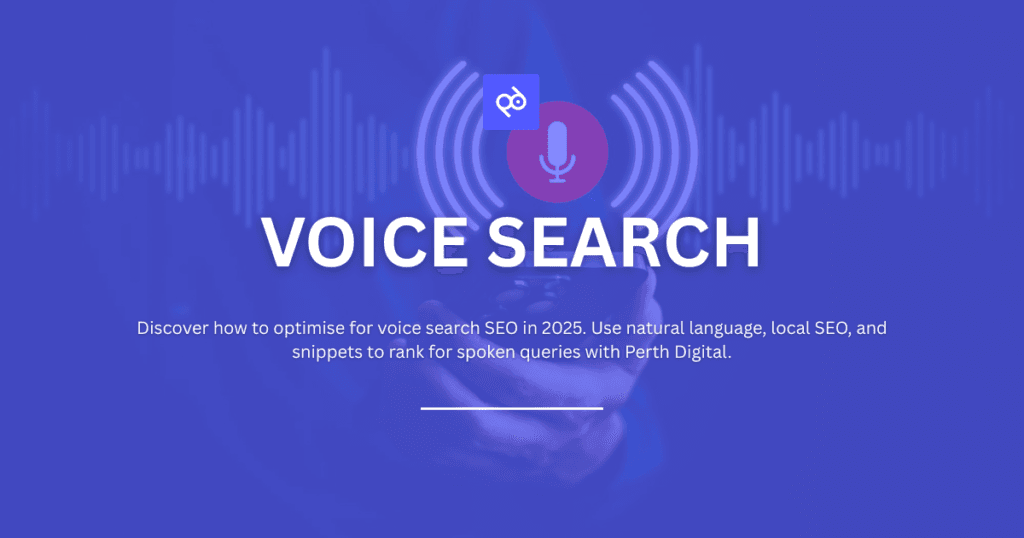
Typing isn’t the only way people search anymore. From smart speakers in living rooms to virtual assistants on mobile devices, voice-powered search is now part of daily life. This shift is changing SEO forever. If your business wants to stay visible, optimising for spoken queries is no longer optional, it’s essential. In this guide, we’ll break down what voice search SEO is, why it matters, and how to optimise your content so it’s chosen as the answer when users ask their devices a question. What Is Voice Search SEO? Voice search SEO means tailoring your website and content so that it ranks for spoken queries on devices like Alexa, Siri, and Google Assistant. Unlike text searches, which are often short (“Mexican restaurant California”), voice searches are longer, conversational, and question-based (“What’s the best Mexican restaurant near me in California?”). To succeed, businesses need to: The closer your content matches real speech, the more likely it is to surface in voice results. Why Voice Search Deserves Your Attention 1. Voice Tech Adoption Is Exploding Smart speakers like Google Nest and Amazon Echo are now common household tools. In the UK, 30% of adults use digital assistants daily for weather updates, entertainment, and searches. Ignoring voice means ignoring a growing segment of searchers. 2. Search Behaviour Has Changed People don’t talk like they type. Instead of keyword fragments, they use full questions and natural phrasing. SEO now needs to align with conversational patterns. 3. Position Zero Is the Prize When a voice assistant answers, it often pulls from Google’s featured snippets. That means ranking in “position zero” dramatically boosts your chances of being the spoken response. How to Optimise for Voice Search 1. Write in a Conversational Tone Adopt language that feels natural. For example: This makes your content more likely to match real voice queries. 2. Target Long-Tail & Question Keywords Focus on longer, intent-rich question keywords like: Tools such as Answer the Public or Google’s People Also Ask can reveal natural speech patterns to include in your content. 3. Make Your Site Mobile-Friendly and Fast Most voice searches happen on mobile. Optimise by: 4. Use Schema Markup Structured data helps search engines understand context. Useful schema types include: Example: A Leeds dental clinic that uses LocalBusiness schema can appear in results for “Find a dentist near me open now.” 5. Strengthen Local SEO Many voice searches are local (e.g., “coffee shop near me”). Boost your local visibility by: 6. Create a Detailed FAQ Section Since most voice searches start with who, what, when, where, why, or how, FAQs are gold for optimisation. Keep answers short (50–60 words) and direct. This format is ideal for featured snippets and voice playback. The Future of Voice Search Voice technology is evolving alongside AI systems like Google’s MUM (Multitask Unified Model), which better understands context and intent. That means: Voice isn’t just a trend, it’s part of the future of SEO. Businesses that adapt now will gain a significant advantage in user engagement and discoverability. Your Next Step To thrive in the age of spoken queries, businesses must rethink SEO strategies. Focus on natural language, quick answers, and local optimisation to capture this growing traffic. At Perth Digital, we help brands future-proof their SEO by optimising for voice, visual, and traditional search. Ready to make your content speak for itself? Get in touch with us today!
Visual Search Optimisation in 2025: A Complete Guide for Businesses
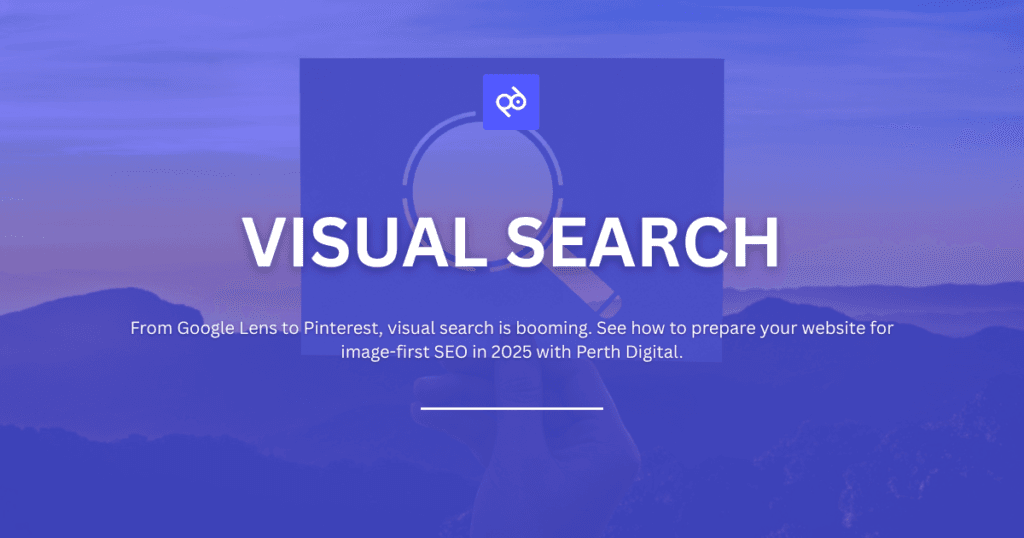
Search is no longer limited to typing words into a box. Today, users can point their camera at an object and instantly get product details, translation, or purchase options. This growing SEO trend, known as visual search, is transforming digital marketing and SEO strategies. For businesses, optimising for visual discovery means more visibility, faster conversions, and stronger connections with image-first audiences. Let’s explore what visual search is, why it matters, and how you can make your website ready for this next phase of search. What Exactly Is Visual Search? Visual search lets people use images to find information online. Instead of typing “white trainers with blue stripes,” you can snap a photo of the shoes and let AI find the exact or similar products. This technology relies on computer vision, machine learning, and AI recognition to identify objects, read text, and return results in seconds. For users, it’s faster and more intuitive. For businesses, it’s a powerful new way to be discovered. Key Players in the Visual Search Space Since computing and extracting information from images are still relatively new technology, it’s fitting that only the big corporations are ahead of the curve in terms of innovation and implementation. Google Lens The most widely used visual search tool. Integrated into Android devices, Chrome, and Google Photos, it’s capable of: Google reports that Lens processes nearly 20 billion visual searches each month, making it the leader in this field. Bing Visual Search Microsoft’s offering works similarly but is especially popular among desktop users. A standout feature: the ability to click on objects inside an image to shop for related products. Pinterest Lens Designed for discovery, Pinterest’s tool shines in lifestyle categories like fashion, home décor, and food inspiration. Users can snap or upload a photo to get stylistically similar pins, making it ideal for trend-focused industries. Why Brands Should Care About Visual Search Visual search isn’t just a shiny new feature, it’s reshaping consumer behaviour and purchase journeys. 1. Users Prefer Visuals Image-first generations are moving away from long text queries and toward visual discovery on platforms like Instagram, TikTok, and Pinterest. 2. Shorter Path to Purchase Spot it, snap it, shop it. Visual search reduces friction between interest and conversion, giving eCommerce brands a huge advantage. 3. Voice and Visual Working Together Just as businesses had to optimise for voice search, now they must adapt for images. Increasingly, users will mix both. For example, speaking a query and refining it with a photo. How to Optimise Your Site for Visual Search Now that you gain a deeper understanding of visual search, let’s move on to how exactly you can utilise this new technology into your website. 1. High-Quality, Context-Rich Images Example: An online fashion retailer should photograph a coat flat, on a hanger, and being worn outdoors. This variety improves recognition across different user photos. 2. Smart Filenames and Alt Text 3. Image Sitemaps for Discoverability Example: A travel blog’s sitemap might include “View of Prague Castle at sunset, photographed from Charles Bridge” to maximise contextual accuracy. 4. Schema Markup for Structured Data 5. Technical Performance Optimisation 6. Expand Beyond Google Visual discovery happens on multiple platforms: Example: A skincare brand pinning styled product shots like “Morning Skincare Routine for Dry Skin” can rank in both Pinterest Lens and Google Images. The Future of Visual Search The next stage of visual discovery will merge with AI and augmented reality: Businesses that adapt now will have a head start in capturing tomorrow’s search audience. Take Action Now Visual search is no longer optional, it’s a growing expectation. By preparing your images, metadata, and platforms today, you’ll gain visibility where users are already searching. At Perth Digital, we help brands transform SEO strategies for the future of search. Want to make visual search part of your growth plan? Get in touch with us today!
7 Essential SEO Tools to Boost Your Business Online
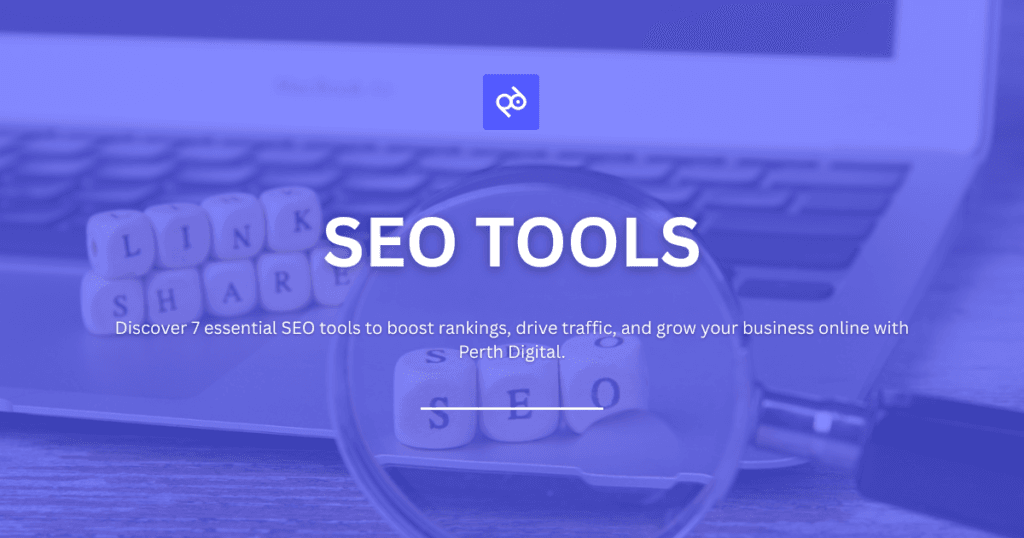
Growing a business today requires more than just having a website, it’s about making sure people can actually find you. That’s where SEO tools come in. From tracking performance to researching niche keywords, the right tools can give you the edge you need to compete. This guide highlights some of the most effective SEO tools available, tailored for startups, eCommerce brands, local shops, and content-driven businesses. Why Your Business Can’t Ignore SEO Tools SEO (Search Engine Optimization) is the backbone of online visibility. It covers everything from keyword targeting and technical fixes to competitor tracking and backlink strategies. Doing all of this manually is not only overwhelming but also inefficient. That’s where SEO tools shine: Whether you’re trying to increase local visibility or dominate search results globally, these tools can make the difference between staying hidden and standing out. 7 Must-Have SEO Tools for Success With so many options available, choosing the right SEO toolkit can feel daunting. Below, we break down seven trusted tools that cover every angle of optimization, from technical audits to content creation. 1. Google Search Console A free, powerful tool straight from Google, designed to show exactly how your site performs in search results. Best for: Performance monitoring Cost: Free Highlights: 2. Yoast SEO (WordPress Plugin) An easy-to-use plugin that optimizes content directly within WordPress. Best for: On-page SEO optimization Cost: Free (premium available) Highlights: 3. Screaming Frog SEO Spider A desktop program for technical site audits. Best for: Detecting site-wide technical issues Cost: Free (paid upgrade available) Highlights: 4. Google Analytics While not a pure SEO tool, it’s essential for understanding user behavior. Best for: Traffic and engagement analysis Cost: Free Highlights: 5. Detailed SEO Extension A lightweight browser extension for quick on-page analysis. Best for: Instant SEO snapshots Cost: Free Highlights: 6. Ahrefs A go-to tool for backlink strategies and deep keyword research. Best for: Backlink intelligence Cost: Paid Highlights: 7. Moz Pro A trusted suite blending SEO research with an educational community. Best for: Well-rounded SEO learning and implementation Cost: Paid (free trial available) Highlights: Picking the Right SEO Toolkit Every business has unique needs, so there’s no universal “best” tool. Here’s a simple guide: Investing time in learning and applying even a few of these can dramatically increase visibility and traffic. At Perth Digital, we specialize in helping businesses implement these tools effectively. If you’re unsure where to begin, contact us today and we’ll guide you every step of the way.
How to Capture Featured Snippets: Winning Google’s Position Zero
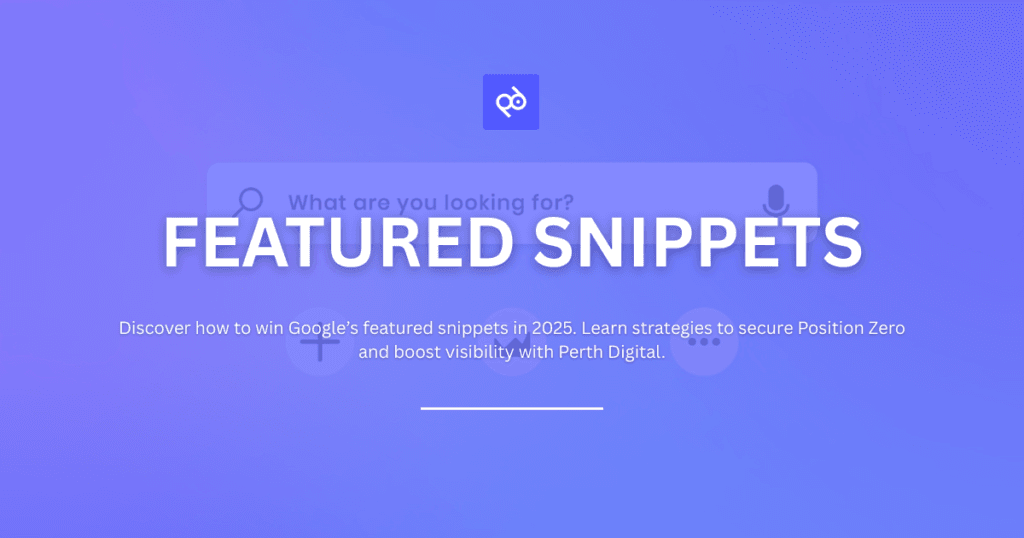
Competition in search is fiercer than ever. Ranking on page one is no longer enough, users are drawn to featured snippets, the box that appears above all other organic results. Often called Position Zero, this spot gives your brand unmatched visibility and brand authority. This guide explores what featured snippets are, why they’ve become so crucial in 2025, and the strategies you can use to secure them. Featured Snippets Explained A featured snippet is a highlighted answer box that Google displays at the top of its results page. It pulls key information from a web page and presents it in a format that’s quick and easy to digest. The formats you’ll see most often: Example: Searching for “steps to reset an iPhone” might show a numbered list pulled directly from a tech site, saving you a click while spotlighting that brand. Why Featured Snippets Are Essential in 2025 Search behavior and SEO trends continues to shift. With mobile-first browsing, AI assistants, and the explosion of voice search, snippets are no longer just a “bonus”, they’re often the only answer users see or hear. Key benefits include: How Google Chooses Snippets Google’s goal with featured snippets is to give searchers fast, accurate answers. To decide which content to highlight, it looks for these qualities: Concise and Structured Google favors quality content that is organized and easy to scan. Articles that use proper headings, short sentences, and clean formatting are far more likely to be pulled into a snippet. If your answer is buried in a long block of text, Google may overlook it in favor of a competitor who presents the same information more clearly. Accurate and Trustworthy Authority matters. Google wants to feature information from reliable, reputable sources. This means citing credible references, using up-to-date data, and writing content that demonstrates expertise. Websites with established trust signals, such as good backlinks, strong domain authority, and a professional tone, have a higher chance of being chosen. Aligned with Search Intent Snippets are only valuable if they directly match what the user is asking. Google uses natural language processing to understand whether your answer satisfies the query. If someone searches “how to boil an egg”, for example, a step-by-step guide will be favored over a long article about egg nutrition. By focusing on search intent, you align your content with the exact needs of the searcher, increasing the odds of selection. In other words, you need to anticipate the question behind the query and provide a clear, direct answer upfront. Types of Snippets and How to Optimise for Them Now that you’ve gained a better understanding of featured snippets, let’s move on to their various types and ways we can optimise them. 1. Text Snippets (Paragraphs) 2. Lists 3. Tables 4. Videos Practical Strategies to Secure Featured Snippets Below are a few main strategies you can use to secure featured snippets for your business’ online presence. 1. Target Snippet-Friendly Keywords 2. Deliver the Answer Fast 3. Structure for Easy Parsing 4. Add Schema Markup Implement FAQPage, HowTo, or Article schema to reinforce context. 5. Answer Related Questions Together 6. Optimise for Voice & Mobile Pitfalls to Avoid Are Featured Snippets Worth It? Absolutely. While some argue snippets encourage “zero-click searches,” the tradeoff is authority and visibility. Even when users don’t click through, your brand becomes the recognized source of truth. For competitive industries, that recognition alone can be the edge you need. Final Word: Owning Position Zero Earning a featured snippet is more than an SEO tactic, it’s a branding opportunity. By producing clear, structured, user-first content, you increase your chances of owning Position Zero in 2025. At Perth Digital, we help businesses dominate search visibility with content strategies that target featured snippets. If you’re ready to stand out where it matters most, let’s talk. Don’t just rank—lead. Contact us today!
Schema Markup: A Modern Guide to Structured Data
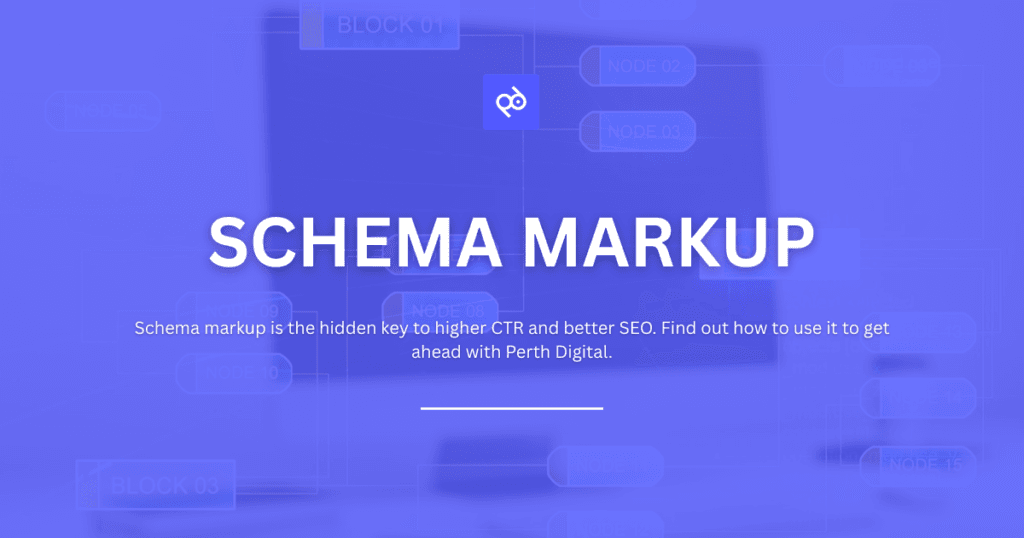
If your website feels invisible in search results, the issue may not be your design or content but the way search engines interpret your site. That’s where schema markup comes in. By layering structured data into your pages, you help Google (and other search engines) see exactly what your website offers, resulting in richer listings, better visibility, and more clicks. This guide walks you through what schema markup is, why it’s essential, which formats and types to use, and practical methods to implement it effectively. Understanding Schema Markup in Plain Language Think of schema markup as “labels” for your website. Instead of leaving Google to guess whether your page is about a product, a recipe, or a business location, schema markup spells it out clearly. The initiative comes from Schema.org, a project backed by major search engines including Google, Bing, and Yandex. Their goal? A universal dictionary of structured data that websites can use to add meaningful context to their content. Everyday Example Imagine you run a bakery in Hanoi. Without schema markup, your homepage might just display your address, phone number, and opening hours as plain text. But with schema markup, you can add precise details like: These details can then show up in rich results (like star ratings or “order now” buttons) directly in search, giving your business a competitive edge. Why Schema Matters for SEO Schema markup doesn’t directly boost your rankings, but it does improve how your site appears in search. By qualifying for enhanced snippets, you gain: In short, schema markup makes your listings stand out and ensures search engines understand your content correctly. Choosing the Right Format for Schema Schema can be implemented in three ways, but only one is recommended: Format Placement Ease of Use Best Choice? JSON-LD <head> or <body> Easy ✅ Yes Microdata Inline with HTML Moderate ❌ No RDFa Inline with HTML Complex ❌ Rare JSON-LD is Google’s preferred option because it separates code from design, making it easier to update and maintain. Popular Schema Types You Should Know Here are some of the most widely used schema markups and why they matter: Ways to Add Schema to Your Website You don’t need to be a developer to start using schema. Here are three common approaches: Schema Is No Longer Optional In today’s digital marketplace, structured data is a necessity, not an extra. Adding schema markup ensures your website communicates clearly with search engines, boosting visibility, credibility, and conversions. At Perth Digital, we specialize in SEO and web development strategies that drive real results. If you’re ready to make your website smarter, let’s talk. Stop blending in. Start standing out. Get in touch with us today!